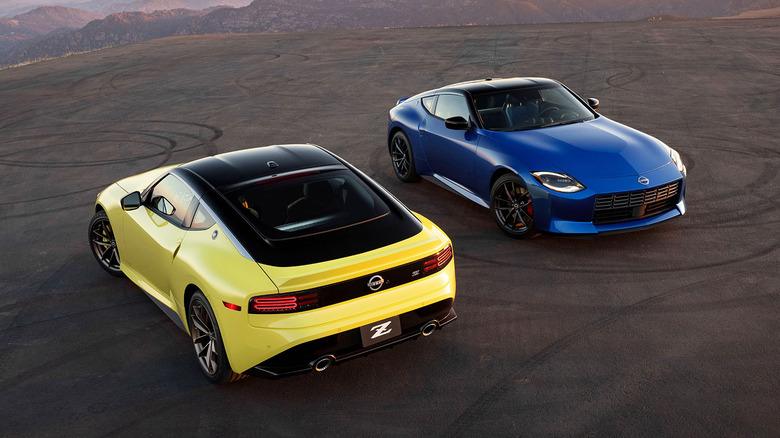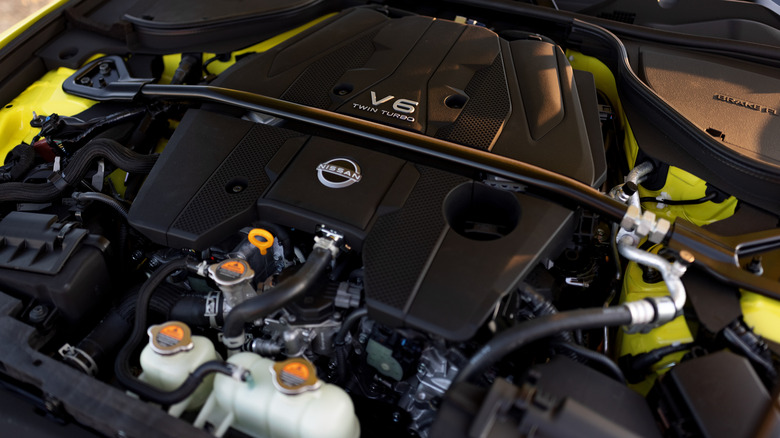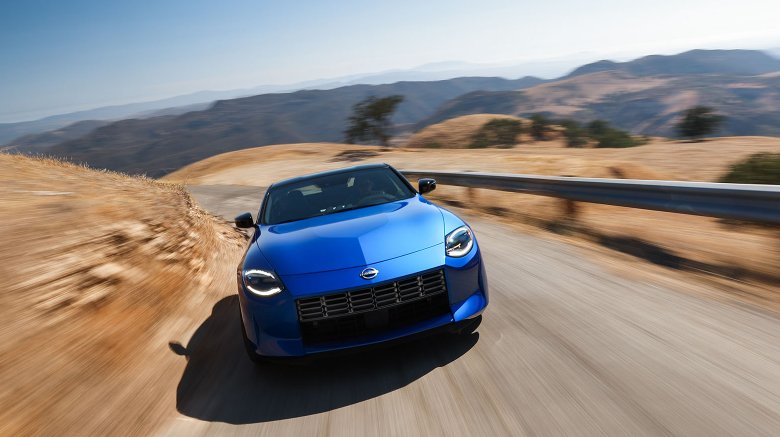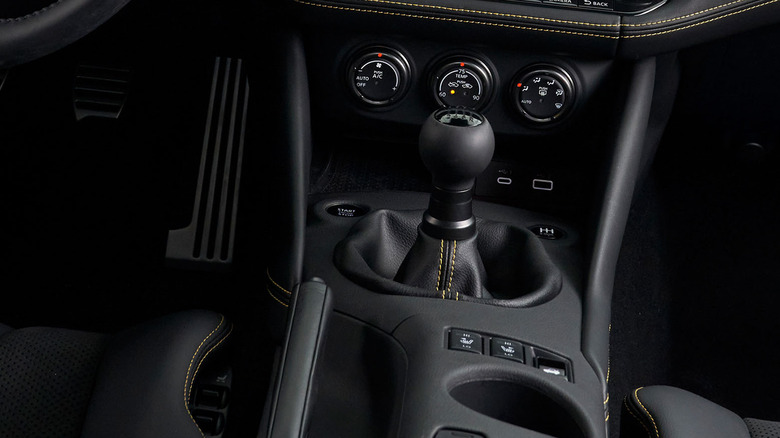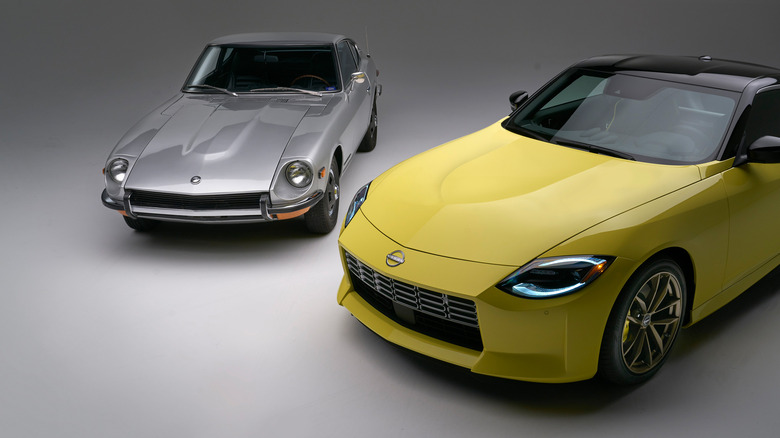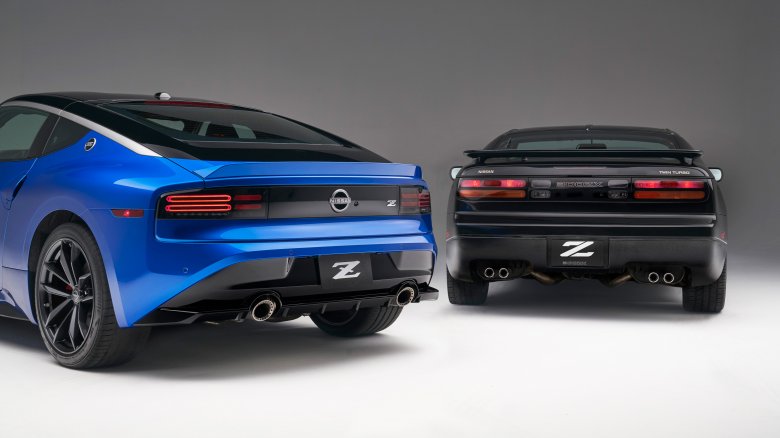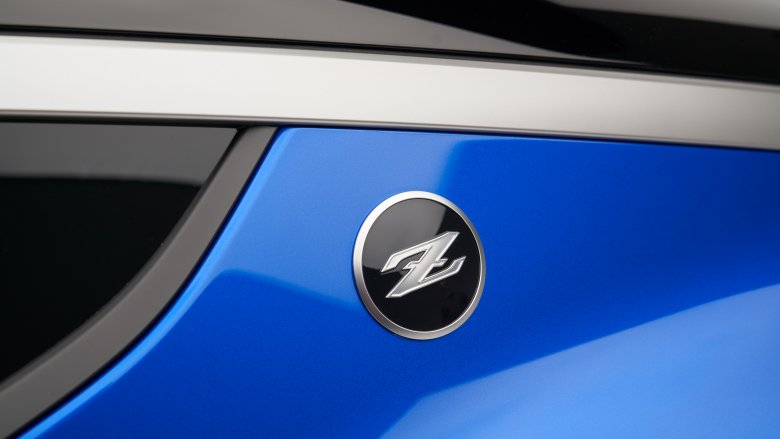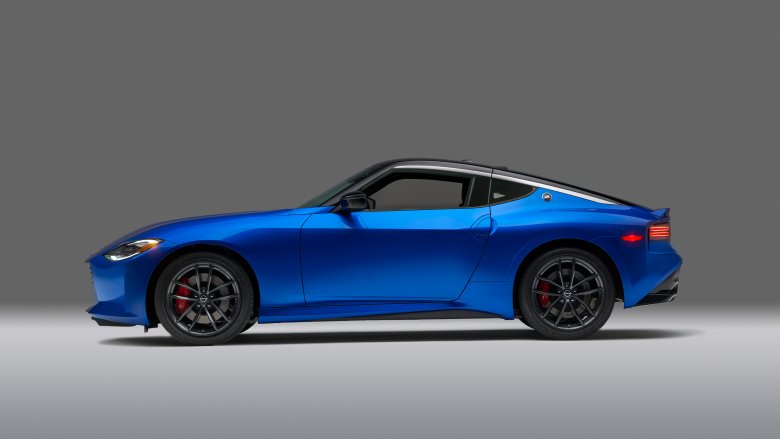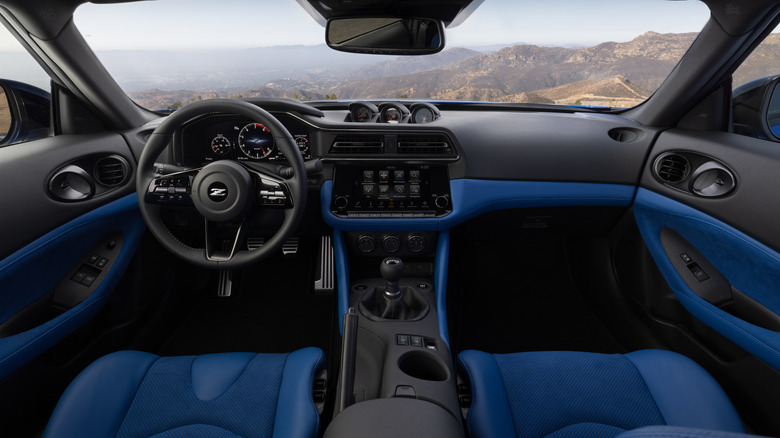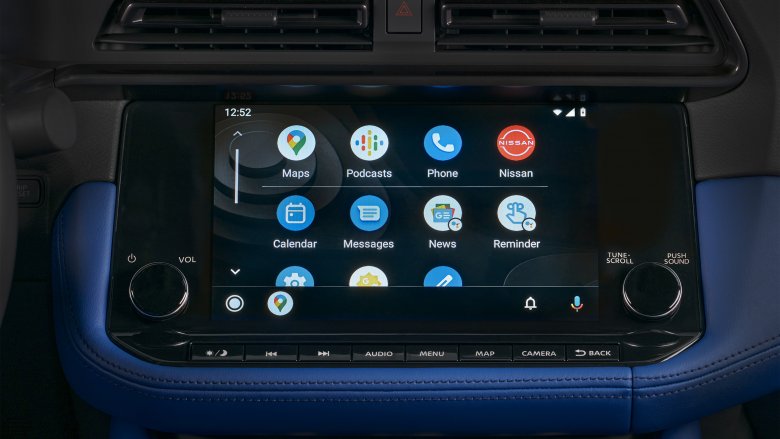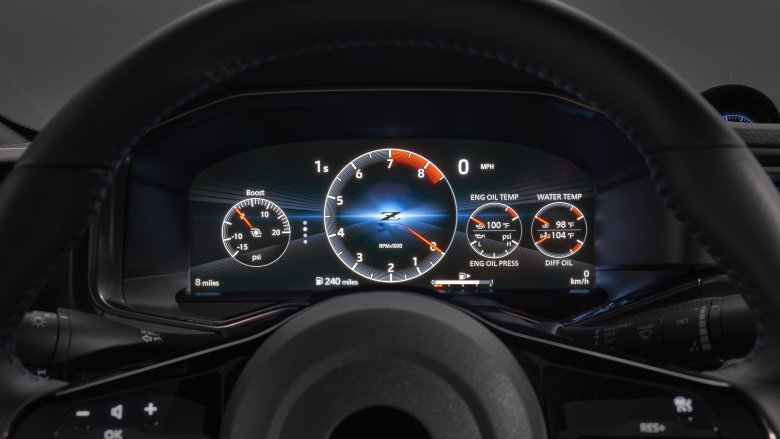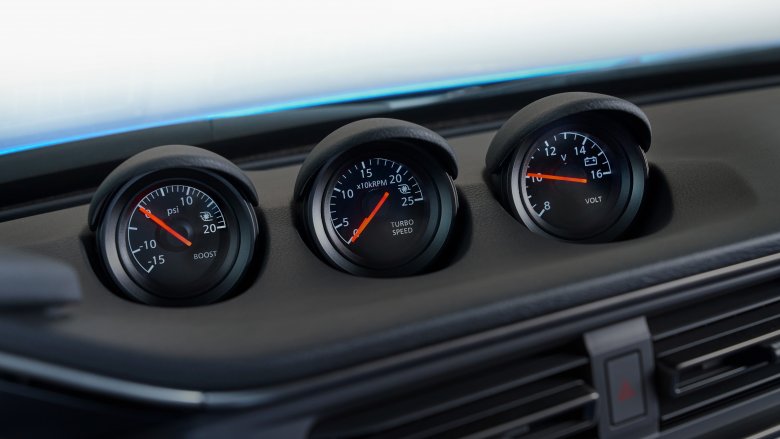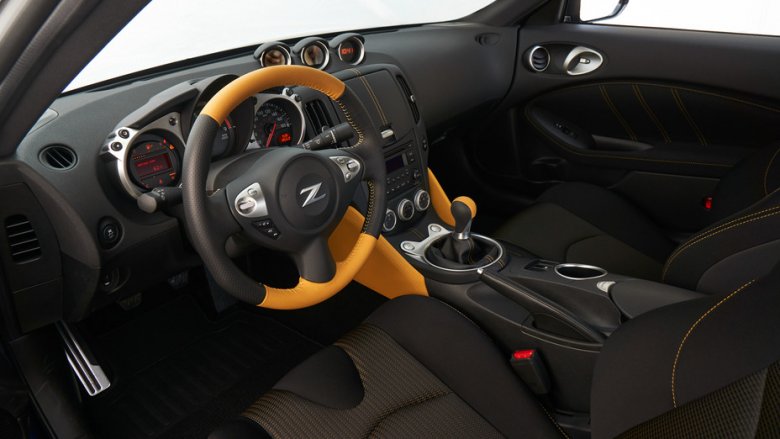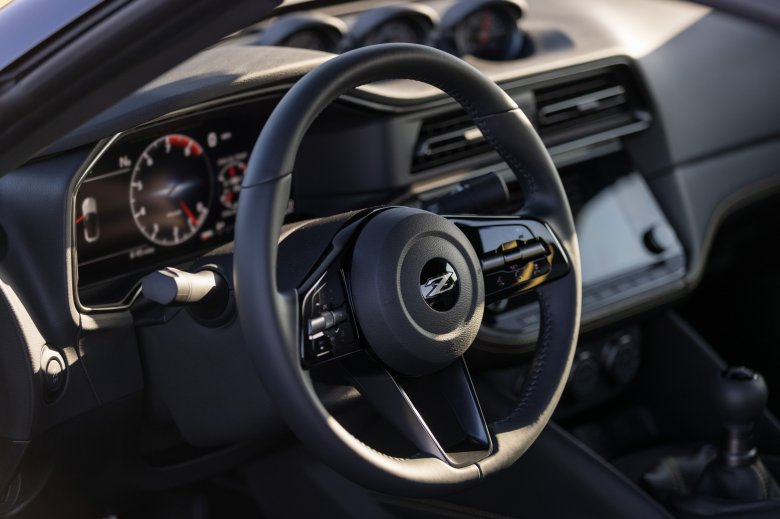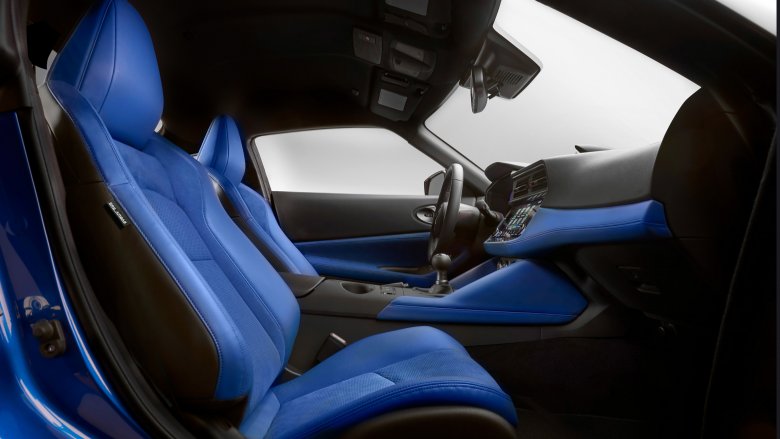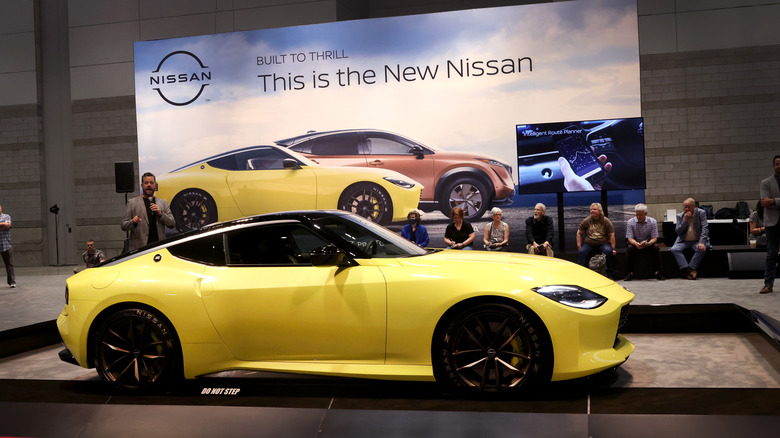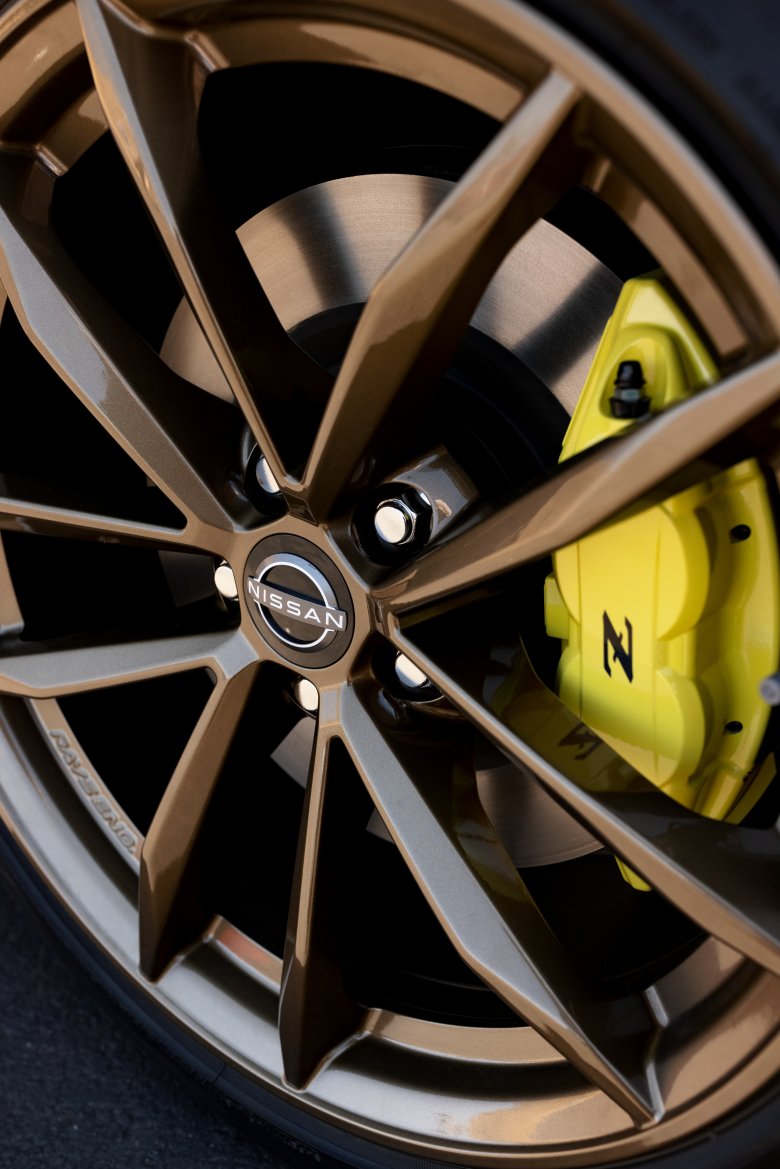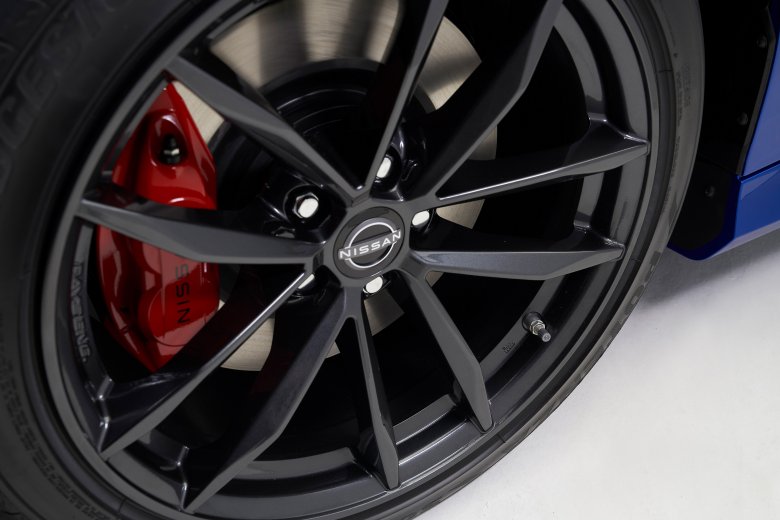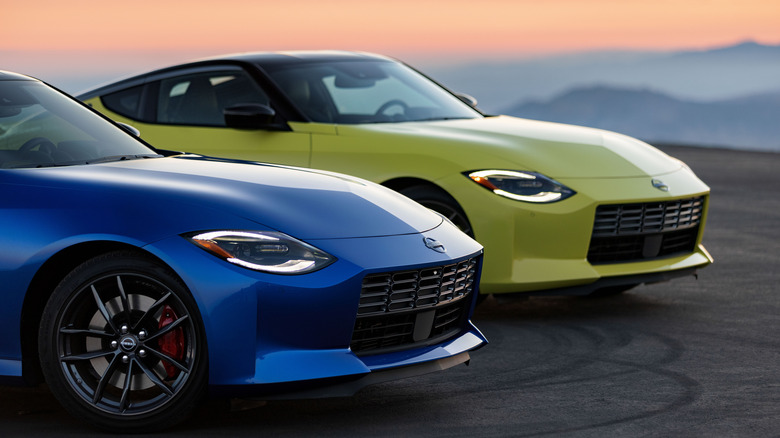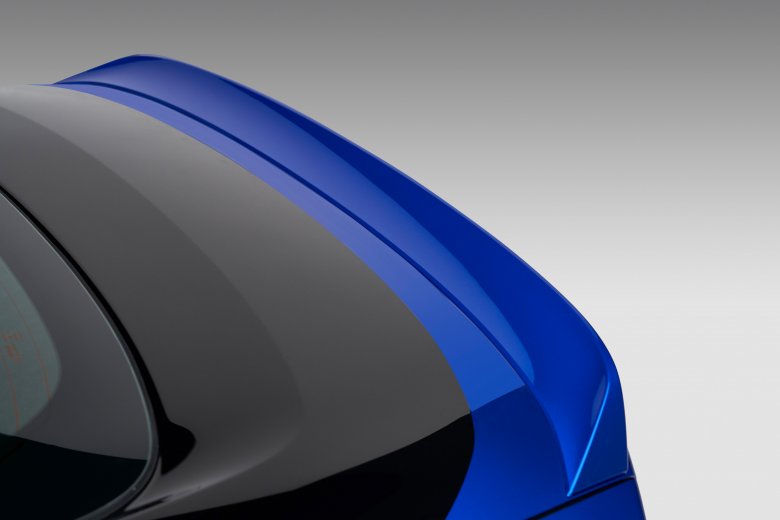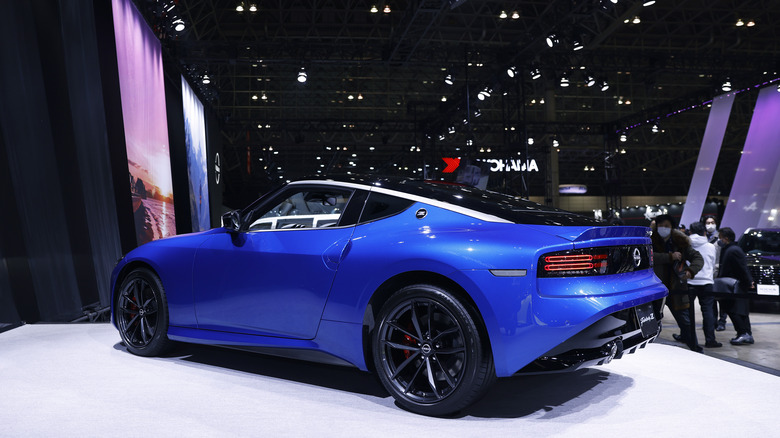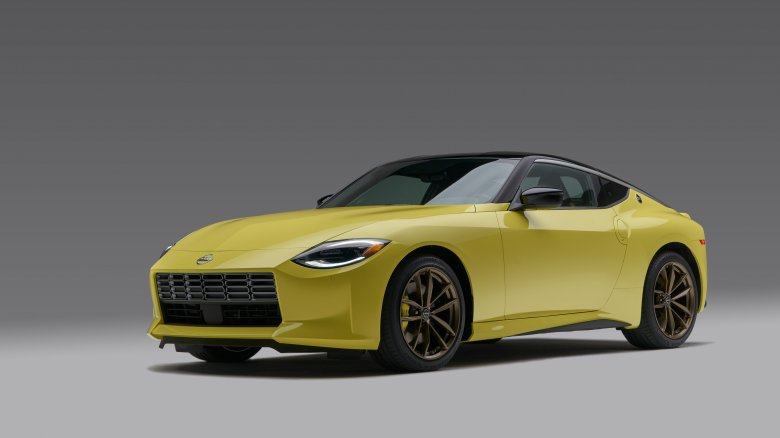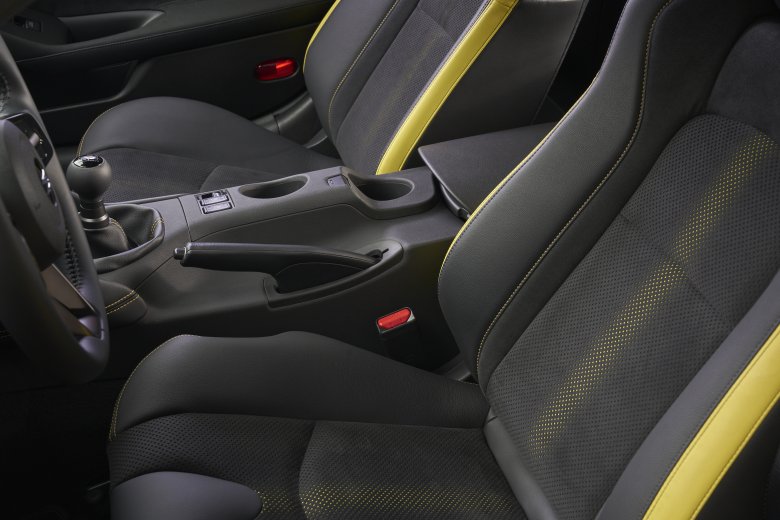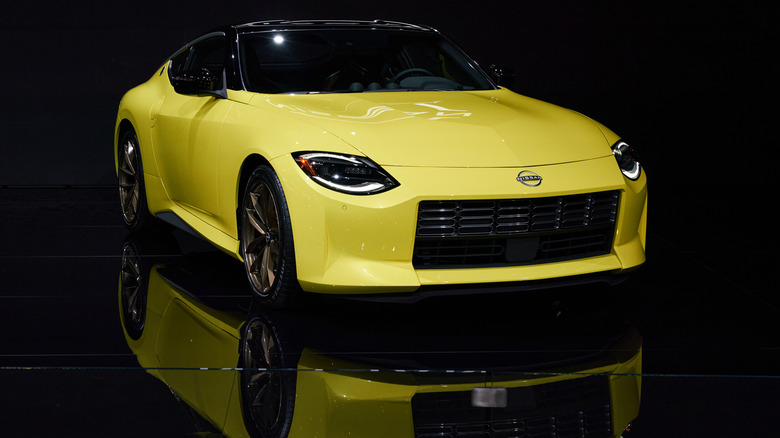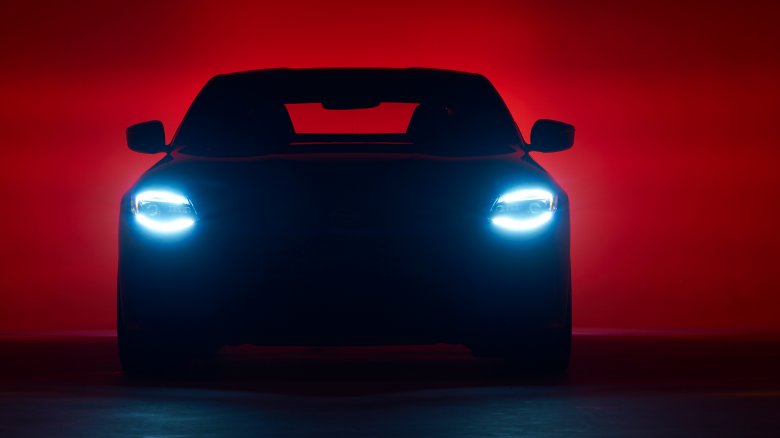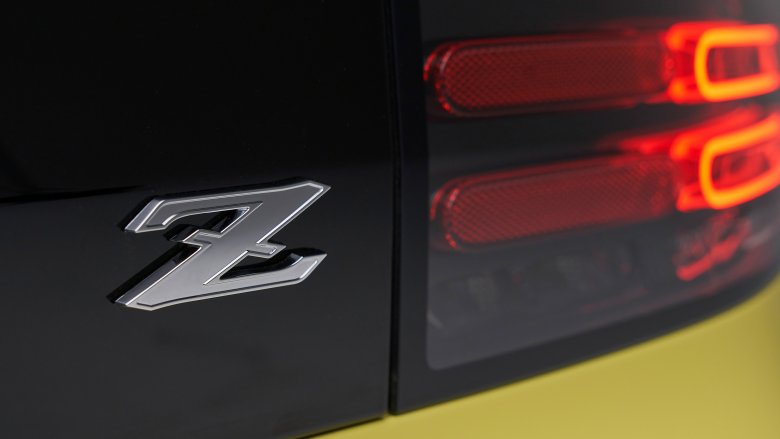2023 Nissan Z: Everything We Know So Far
In the coming year, the Nissan Z sports car will see a much-needed update, shipping in 2022 for the 2023 model year, the company notes. This new generation will be its first update in a decade and will add some modern comforts, without shaking up the classic formula too much. Design elements pay homage to the classic Fairlady Zs released in the 1970s. Previously, Nissan has given each "Z" generation a number designation denoting engine displacement, such as 240Z and 370Z. That practice will be dropped, so the new model is just referred to as "Z."
The vehicle is among the cars we are most looking forward to in the 2023 lineup. It received numerous upgrades and changes to improve performance, appearance, and aesthetics. Nissan's refresh of its Z separates the brand, particularly given the focus on SUVs and larger sedans by most major automakers. Here's everything we know about the 2023 Nissan Z.
The engine
As Nissan's press release details, this model will mark the first time the car has had a reduction in engine size from one generation to the next. The 3.7 liter naturally aspirated V6, Car and Driver notes, of the 370Z will be dropped for a 3.0 liter turbocharged V6. The new engine, designated VR30DDTT, has already seen use in Inifiniti's sedans and coupes going back to 2016. As a result, aftermarket tuning support should arrive for the new Z not long after its release. This will also be the first time that the Z has received turbo power since the 300ZX (via AutoWeek). The front-engine, rear-wheel-drive layout will be retained, as we'd expect.
Nissan is claiming 400 horsepower and 350 lb-ft of torque out of the V6. That's a marked increase of 68 horses and 80 torque over the previous model. It comes in a dual overhead cam configuration with four valves per cylinder. Additionally, it will add technologies brand new to the Z like direct fuel injection and continuously variable valve timing, the release notes.
With that added power, the manufacturer promises, "an estimated 15 percent improvement in 0 to 60 mph acceleration," per its press release. Going by Car and Driver's test of the 370Z in 2018, the last generation could get to 60 in about five seconds flat. That should put the new Z in the 4.2-second range. Quick enough to keep up with competitors like the Supra and Mustang GT.
Gearboxes
The engine will come with two transmission options, Nissan notes. A standard six-speed manual stick shift will be carried over from the 370Z, along with its automatic rev-matching option. Gear ratios on the six-speed appear to be mostly unchanged (via Car and Driver), although the final drive ratio will be slightly shorter, improving acceleration. This manual version will also come with a factory carbon fiber driveshaft, which both saves some weight and quickens engine response.
The seven-speed automatic of the old car will be replaced with another torque converter auto, this time with nine gears. This nine-speed is originally developed by Mercedes, Renault Nissan Alliance notes, and is currently installed in many of Nissan's trucks and SUVs. If the gearbox can stand up to things like towing and off-roading, then the new Z should be light work for it. Both transmissions are also slated to come with optional electronic launch control, a first for the platform.
Nissan will be bringing a whole suite of new electronic safety aids to the platform, including adaptive cruise control, a backup camera, blind spot, collision, and lane departure warning sensors, per its release. In case of an imminent collision, automatic emergency braking can be engaged. The Z will have three airbags per passenger, with front-facing deployments augmented by roof-mounted and seat-mounted side cushions.
The looks
Bodywork will be updated significantly, while general shape and dimensions remain similar to the 370Z, as per the company's specs. Design cues can be described as "retro-futuristic," with many call-backs to the original 240Z (via Nissan) along with the 300ZX. Most pronounced of these are the headlights, taillights, hood slope, and front fascia. The Z emblem itself is nearly identical to its 1970s appearance. Exterior lighting now incorporates LEDs, bringing the car up to speed with modern design trends.
Nissan lists Black Diamond Metallic, Gun Metallic, and Rosewood Metallic as monotone paint options. Brilliant Silver, Boulder Gray, Seiran Blue, Ikazuchi Yellow, Passion Red TriCoat, and Everest White Pearl TriCoat are all paired with a black roof, making for a two-tone color scheme. Lastly, the borders of the roof show off polished metal strips meant to evoke Japanese katana blades.
Exterior dimensions will change very little compared to the previous generation, hinting that this car shares much of its basic structure with the 370Z. Both cars share a 100.4 inch wheelbase (via Car and Driver), and 72.6 inches of width. Overall body length is reduced by exactly one inch, down to 172.4. Nissan hasn't published an official weigh-in for the new Z, but it will most likely be a little bulkier than the 370. Motor Trend estimates a 3,500 kerb weight, for an increase of about 200 pounds over the previous Z. However, the added power should be more than enough to compensate.
The interior
Nissan put a lot of focus into updating the interior space for a new generation, per its release. The includes a modern touch infotainment system with Bluetooth audio, Carplay, and XM satellite connectivity. The console will also feature one USB-A and USB-C charge port, along with two 12V standard outlets. Keyless entry will be a new feature.
The old gauge cluster will be replaced with a digital, customizable display showing speed, engine revs, and diagnostics. The tachometer will gain a programmable shift indicator on manual transmission models.
This driver's side digital cluster is supplemented by three distinct analog gauges over the center console, another callback to the 240Z. Each displays turbo pressure, turbo speed, and battery voltage output.
Interior dimensions appear unchanged, with the two-seat plus cargo hatchback layout. The placement of the shifter, cabin vents, and door handles will be given a more modern, upmarket sheen.
Notice the similarities in door handles, vents, center gauges, console rotary controls, shifter, parking brake, and cupholder.
The sport seats and steering wheel, however, will be brand new. Nissan calls the wheel "GT-R inspired," and it should be less bulky than prior designs. Touch-button controls for driver menus appear at each side, with a retro Z emblem in the center.
The driver's seat will be eight-way adjustable, including position, lumbar, and thigh support. The passenger's side will only be adjustable for position. Both will be adorned with synthetic suede material and optional leather upholstery.
Handling performance
Regarding chassis engineering, Nissan has added structural rigidity to increase maximum cornering G up to 13%, per its release. Car and Driver's 2019 skidpad test showed .89 lateral G forces for the 370Z. Using those two figures, we can estimate nearly 1.0G of cornering grip. C&D's figure for the Mustang GT was .96G, so it seems like the new Z should at least match that. The manufacturer states that the "front and rear dampers use a new monotube shock absorber design with a larger diameter than the outgoing 370Z, resulting in an approximately 20 percent reduction in dampening force to help minimize impact shock over uneven surfaces, enhance road-following performance and improve handling stability."
The front double wishbone and rear multi-link suspension design will be carried over from the old chassis, but the company claims to be tuning and tweaking it for increased comfort and cornering grip. A notable difference is that the hydraulic power steering pump in the 370Z will be replaced by a modern electric unit.
Standard disc brakes at the front will be the same 12.6-inch diameter (Car and Driver), while the rear discs will actually be down-sized slightly to 12.1 inches. These brakes are to use two hydraulic pistons per front rotor and a single piston per rear. Base model tires will be 245mm-wide Yokohamas on black 18-inch alloy wheels at the front and rear, while the 370Z carried skinnier 225s on the front. Larger wheels, tires, and brakes will be available.
Trim options
Nissan will offer two trim packages for 2023 Z — Sport and Performance, per its release. Sport is the base model, while performance offers a variety of comfort and handling enhancements. Both packages feature the same power output, and both can be specced out with either the manual or automatic transmission.
The premium spec will change the outer appearance of the car slightly, with premium front and rear spoilers (via Nissan). On the inside, performance adds mostly electronic features, including launch control and auto rev-matching, plus a premium steering wheel with unique paddle shifters when paired with the auto gearbox. A larger nine-inch infotainment display will feature built-in navigation and Wi-Fi. Sound will be put out by a premium eight-speaker Bose audio system that gains active noise cancelling and sound enhancement. The package will also include the leather seats with built-in heating, and power adjustment for seating position.
What really brings the performance to the table in this model are the upsized wheel, brakes, and tires. With this trim, RAYS 19-inch lightweight forged alloy rims will be standard, per Nissan's specs. Mounted on the larger wheels will be Bridgestone Potenza summer performance tires, measuring 255mm at the front and 275mm at the rear. This added grip surface at the drive wheels should give the package some advantage when it comes to straight-line acceleration as well as cornering.
Braking
When it comes to braking, the performance package will have 14-inch diameter rotors up front and 13.8-inch at the rear. These dimensions match the brakes found on the previous 370Z's Nismo package (via Car and Driver). The aluminum performance calipers also double up on hydraulic power, with four pistons per front disc and two per rear. These upgraded brakes, along with improved tires, will likely provide shorter stopping distances than standard, plus better brake longevity in track driving conditions.
Nissan has also announced an exclusive Proto Spec trim based on the Z concept unveiled in 2020. This Proto edition will be overwhelmingly yellow, starting with the bodywork, brake calipers, and bronzed 19-inch RAYS wheels. The motif continues on the inside, with yellow-accented seats and door inserts. It will also get a unique shift knob on manual transmission examples. Proto Spec is slated to be limited to just 240 units in the U.S. market, the press release notes.
Pricing and release
The manufacturer has held both the price and the release date of the 2023 Z close to its chest. Retail on the 2020 370Z started at just over $31,000 (Car and Driver). It's likely that the new model will see some kind of price increase to account for all the newly added features. In August of 2021, Nissan PR employee Dan Passe tweeted that the Z "will start around $40k for the Sport model." That gives us a ballpark range.
Additionally, the 370Z sport package with upsized tires and brakes fetched $3,700 extra in 2020 (Car and Driver). Our rough estimate is that the 2023 Z Performance will cost at least $44,000. The Proto Spec should also claim an additional premium on top of that. The last limited edition Z, 2020's 50th Anniversary package, cost an extra $2,600, according to Car and Driver. Therefore, it stands to reason that the Z Proto would go for at least $47,000.
The manufacturer has also been vague about the exact release schedule for the Z. As of January, orders haven't yet opened on the car. The 2023 model number, however, gives some hint as to when we can expect it. Oftentimes, a new vehicle is released in the autumn preceding its model year (via Chicago Tribune). We'd expect the Z to do similarly, assuming no production delays. Overall, the 2023 Nissan Z will bring sizable updates to the sports car platform without tossing out its formula.
